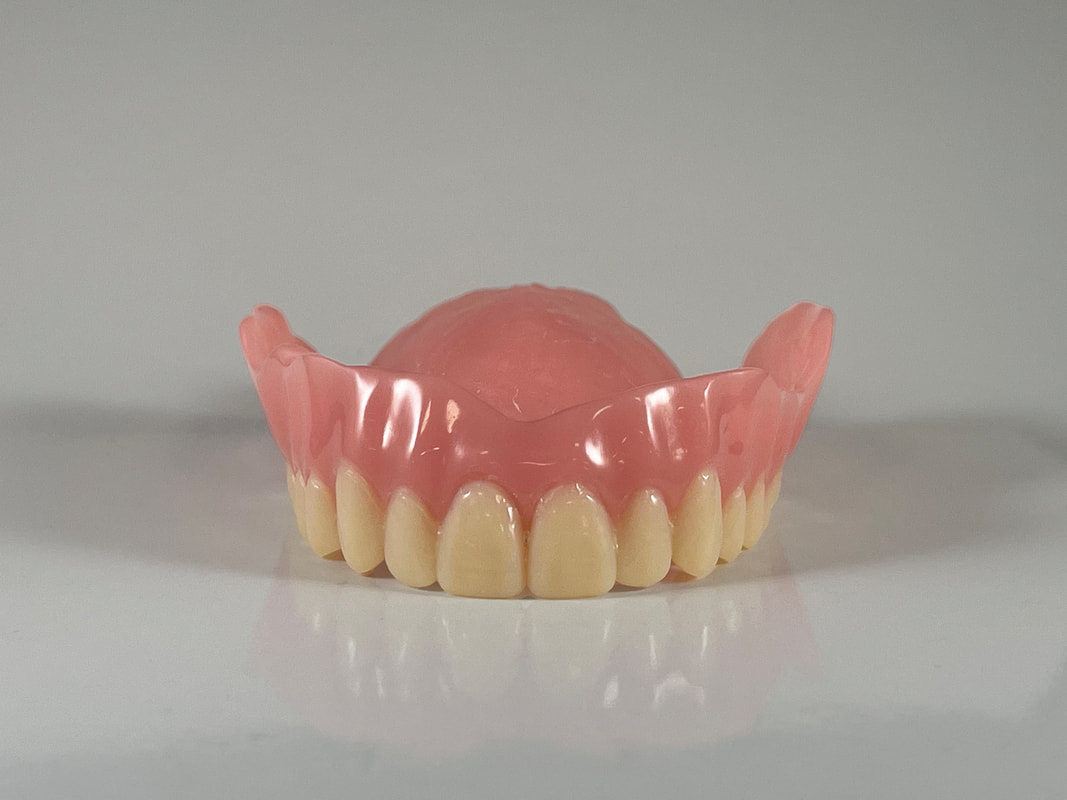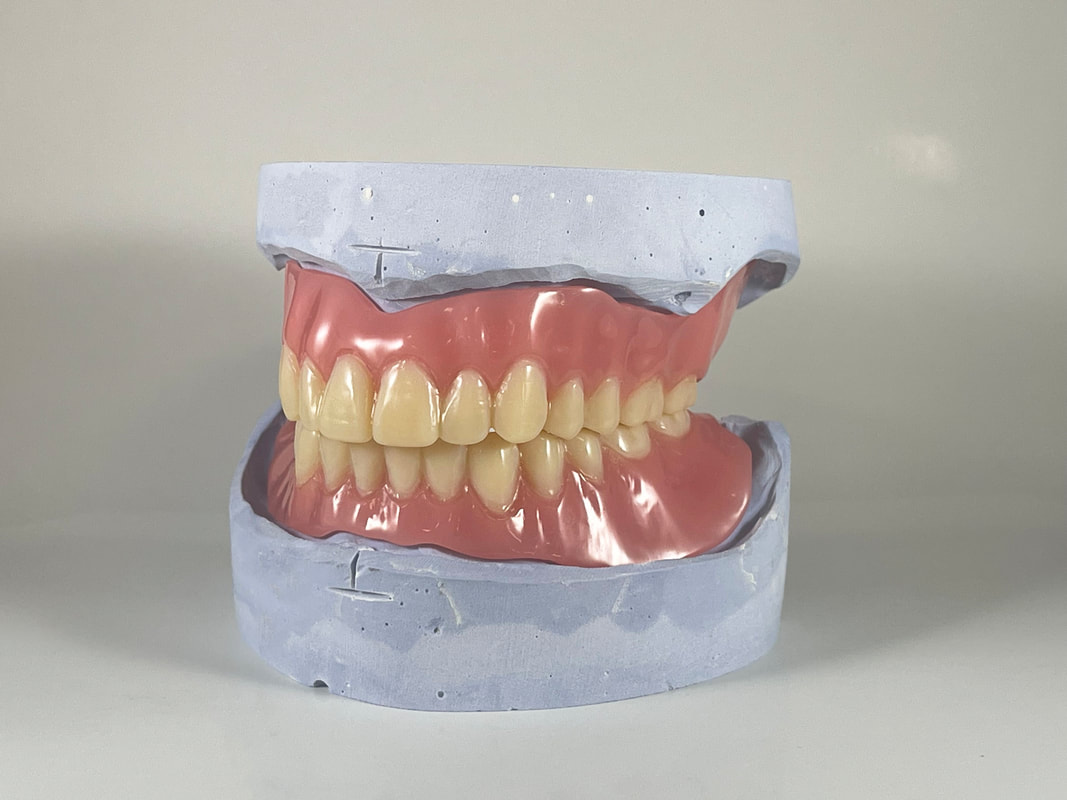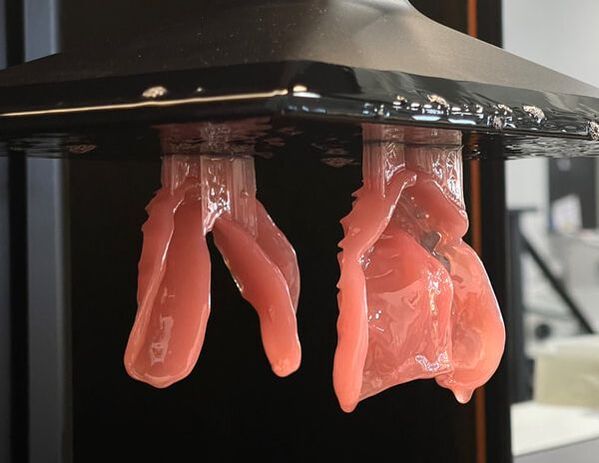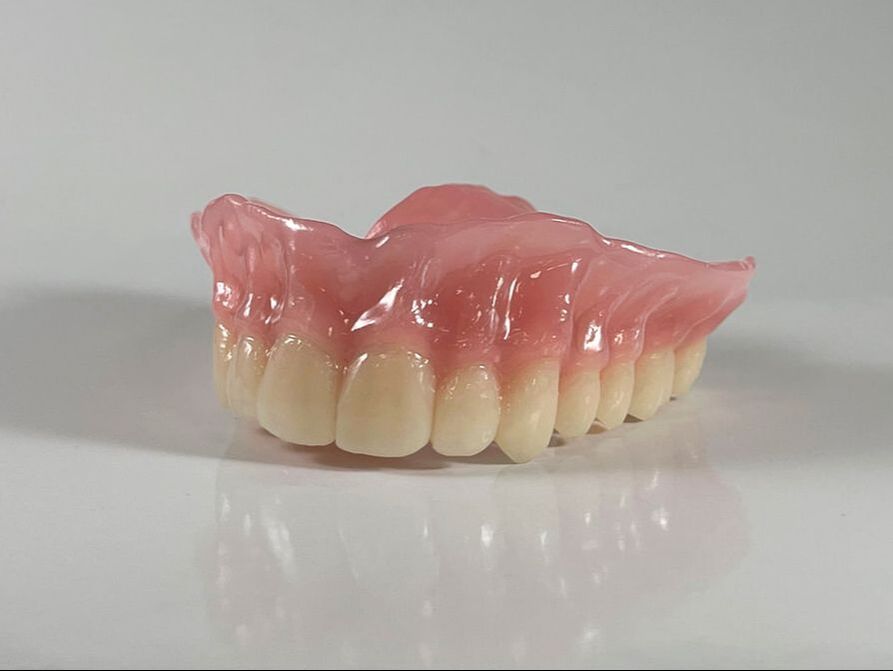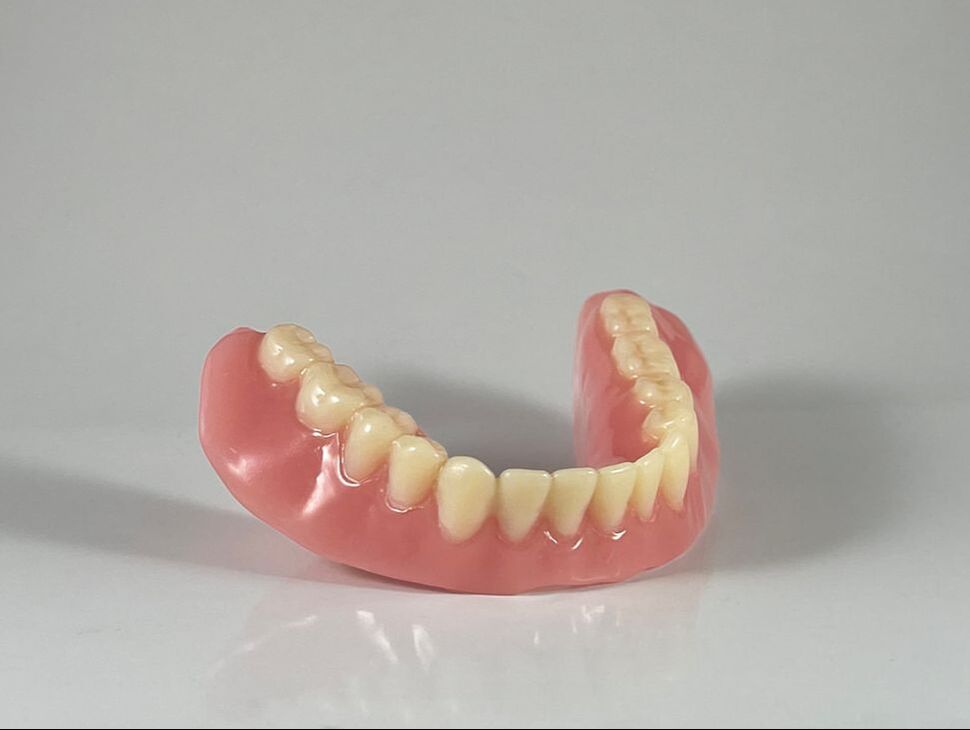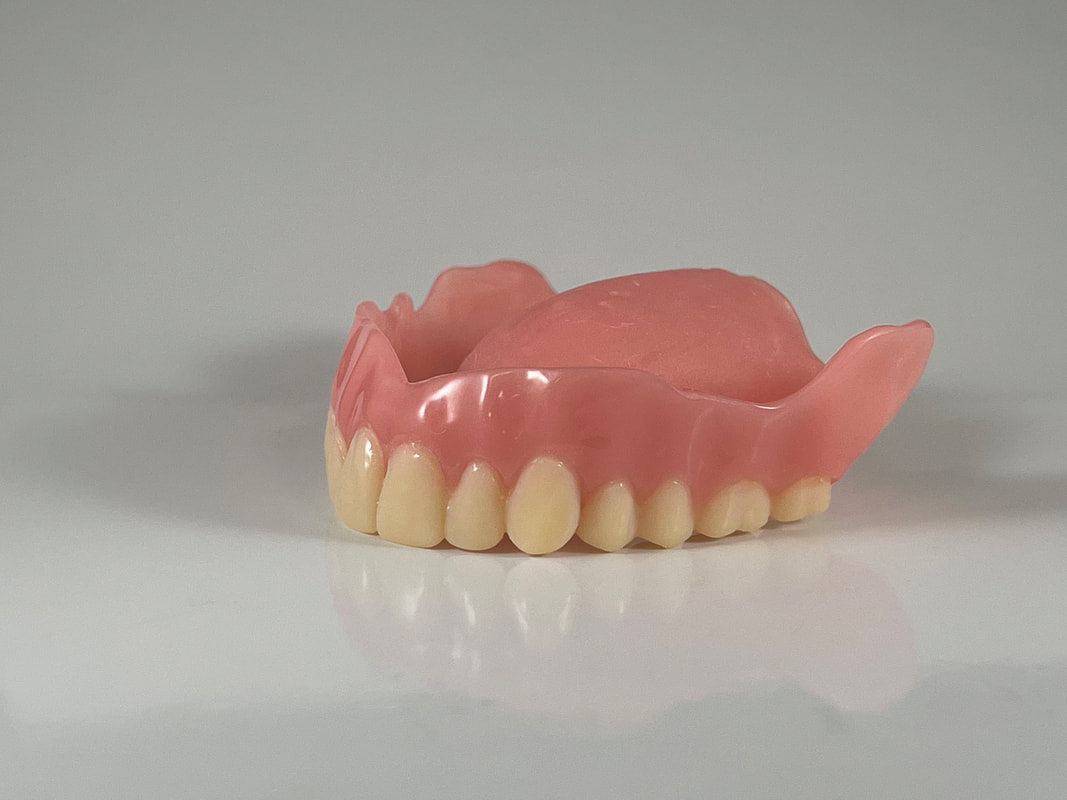|
Fabricating conventional dentures is a craft for technicians. However, each year, it becomes increasingly difficult to find someone with this knowledge and training. Thanks to new advancements in technology, our lab is able to keep up with the demand for restorative removables. Fortunately, with 3D printing technology, digital dentures make the workflow more efficient and accurate. WHAT ARE DIGITAL DENTURES?Digital dentures are fabricated using CAD/CAM technology, 3-dimensional (3D) printing, and skilled denture technicians. With the help of computer-aided design, our technicians can have assistance with the beginning stages of the digital denture design process and then are able to put their creative artistry into the restoration while maintaining every functional aspect needed. ADVANCEMENTS IN TECHNOLOGYAdvancements in dental technology allow professionals to access the patient's needs and facilitate the treatment plan accurately. Digital Photography enables achievement of the patient's shade with ease. 2-dimensional (2D) digital radiography and cone-beam computed tomography (CBCT) scans allow dentists to accurately capture the images needed for diagnosing issues, prepping for surgery, and designing a plan along with the dental lab. Utilizing smaller tools, wands, and cameras, the results are incredible images that can be immediately displayed on advanced screens. Ultimately, the patient can benefit from the ease, speed, and comfort of the new technology. Additionally, they can receive early diagnosis of ailments that in the past took time to discover. Unfortunately, nothing can completely eliminate errors with impression-taking or manual denture processing. As with any process, misprints and malfunctions can always occur. However, with our trained technicians and advanced CAD/CAM systems, adverse occurrences are rare. The CAD/CAM technology allows our technicians to address errors in impressions or scans when they first arrive at the lab. Thanks to quick-streaming doctor portals, the lab can also easily communicate with the dentist to rectify any potential issues. The 3D-printed dentures workflow is less labor intensive as many of the traditional analog steps are no longer needed. However, the digital workflow still requires a CAD/CAM designer, print technician, and denture technician to complete the case. With increased manpower, 3D printers, and milling machines in our CAD/CAM department, The Dental Lab is able to produce more dentures in less time. HIGH-QUALITY DENTURES IN 3 STEPSWe know the importance of chair time and patient experience and expectations. The traditional 9-step denture requires approximately 5-6 patient visits, multiple adjustments, and 4-6 weeks to fabricate. There is a calculated way that is time-consuming, but ensures everything is captured correctly in the impression. Border molding, making sure the tray is horizontal, capturing the buccal vestibule, and making sure there are no voids in the impression are key in the first step. However, at The Dental Lab, we aim to decrease the number of appointments needed to fabricate the perfect set of dentures. Fortunately, the digital workflow has been successful due to the more efficient and faster approaches. At The Dental Lab, we can produce precise fitting, efficient, and high-quality 3D-printed dentures in only three steps:
Digital Dentures WorkflowImpressions can be taken with a digital intra-oral scanner and transferred via web portal services. Our lab also accepts traditional impergum impressions. Once received, our digital portal specialist reviews the scans and inputs the data into our computer system. The accuracy of the preliminary impressions ultimately determines how many appointments are needed. A poor impression that can not accurately be converted into a physical model will require a retake. Specifications such as lip measurements, gingival tissue, marking of the midline, and occlusion types are noted for each case. For try-ins, we offer a milled digital prototype or a wax setup–both of which can be adjusted or manipulated for additional try-ins or prior to finish. The dentist can also choose to continue the process without a try-in. With any case, adjustments may be required. The Dental Lab fabricates 3D-printed dentures with Carbon Printers. The 3D printers use a liquid resin that gradually deposits increments of material at a time. With this workflow, we are able to produce multiple dentures at a time. Our resin of choice is Trusana as it encompasses a large array of shades, with even more to come. Once the gingival bases are printed, we then cure the teeth into place using a blue light that hardens the material. A cleaning cycle is followed before the complete denture goes through finishing and polishing. The last step is quality control. The quality control team is responsible for making sure everything is functional and aesthetically correct for the patient. They double-check each detail and compare the case to the request written on the prescription. DIGITAL FILEDentists will have access to a digital file where they can review, track, or request changes to a case. Every change is recorded and saved in the doctor portal where technicians can retrieve, duplicate, send, and store their digital denture designs. The digital file also makes it more efficient and beneficial when a replacement denture is needed. When it comes time to replace the dentures, every set will be identical and consistent with one another because the storage of the CAD/CAM design allows technicians to retrieve previous files at any time. BENEFITS OF DIGITAL DENTURESSave on impression materials. At The Dental Lab, digital dentures cost the same as conventional dentures. However, dentists have the ability to save on impression materials if they choose to purchase an intra-oral scanner. Enhanced fabrication based on digital design. Designing and production are made easier and quicker with CAD/CAM systems. They allow the technicians to visualize and alter their restorations on a computer before making any physical appliances. Digital file access. What's great for all parties involved is the availability of the digital file to be tracked or reprinted. If a denture is lost or broken, or if the patient even wants a daytime and a nighttime denture, we are able to easily and readily reissue the denture, and the fit and function be identical to the one they originally had. Digital or traditional scanning is accepted. Whether using a digital intra-oral scanner or taking bite registrations traditionally, our technicians can create a digital denture as long as a bite registration is accurately recorded at the initial appointment. Thinner, more comfortable, and better fitting appliance. With our skilled technicians and this advanced technology, we are able to offer dentists a denture that patients are sure to want. The aesthetics, fit, and function are all part of our standard procedures. The addition of dental CAD/CAM helps to yield a more accurate and closer fit to the original palette and mouth tissues. Easily customizable. With all of our restorations, our CAD/CAM team is always customizing a precise custom product, as no patient's palate, teeth, or gingival are the same. Every case is individualized for the patient. Additionally, adjustments may be needed and can quickly be addressed. Denture Labs Near MeLooking for local dental labs that specialize in digital dentures and dental CAD/CAM? We deliver all over the nation with our fast and reliable shipping services, making us a dental laboratory near you--no matter where you are. At The Dental Lab, we create all types of dentures, including traditional dentures and 3D-printed dentures. We want to help you achieve what is required to get a perfectly fitting restoration. Contact us today for questions, concerns, or to send a digital case. Keywords:
The Dental Lab, digital dentures, dental laboratory near me, digital dental, digital denture, benefits of digital dentures, denture labs near me, technicians, local dental labs, digital scanning, traditional scanning, intra-oral scanner, impressions, CBCT, digital dentures from the dental lab, digital dental lab, dental lab, dental labs, 3d printed dentures
1 Comment
Josie
4/20/2023 12:44:57 pm
Wish you served the public
Reply
Leave a Reply. |
